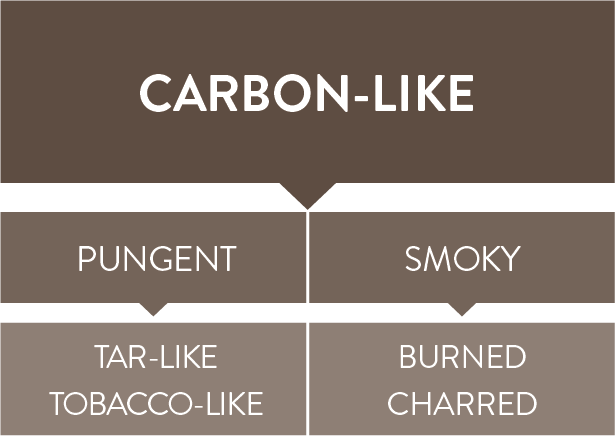Why Kaladi Beans?
It’s all about flavor.
It’s all about flavor.
When it comes to finding your favorite coffee, its all about flavor. But since a coffee’s flavor is varied and complex, we have come up with a simple way to help you find one that suits you.
Many of us know how strong we like our coffee, but what about body? Body is the impression of “weight” or “thickness”—it’s analogous to the difference between water and milk and not to be confused with brew strength. Body is a combination of the natural compounds in coffee and its roast level. Coffee can be light bodied, medium bodied, or full bodied and sometimes somewhere in between.

When we describe taste in coffee, we are referring to the physical sensation on your tongue. Where on your tongue you sense coffee determines its taste. The graphic (left) shows where each taste sensation is located.
Aroma is one of the most important aspects of a coffee’s flavor. Our sense of smell contributes most to our experience, as those of us who have had a head cold can attest. While body and taste are noticeable, it’s usually aroma that makes us fall in love with a coffee—it’s that personal.
Coffee aromas are complex. Of the more than 1000 identifiable compounds that make up coffee’s flavor, about 80% are aromatics. Each coffee has it’s own unique signature and it’s the roaster’s artistry that unlocks that signature.












Why picking and processing is just as important as growing and roasting.


A lot of folks talk community, but at Kaladi, community is our heart and soul. When we went into the business all those years ago, doing right by our local and distant communities was top of the list. We knew that thriving growers would support our business, and, in a nice round-robin way, our fledgling company’s good health would support those same communities.
With that end goal in mind, we began sourcing producers that grew and processed coffee a better way—in the cool shade and washed clean with fresh water.
Our growers are small and vital, as important to their towns and cities as they are to us. A few are women-owned, many are Fair Trade, all are dedicated to providing quality beans. We’re proud to say we’ve maintained long-term relationships with them.
Closer to home, we have the same strong ties with local coffee houses. we choose to support locally-owned businesses. We harbor no aspirations to world domination—the world doesn’t need another chain of coffee stores.
From start to finish, from seed to cup, we’ve stayed true to our cause and purpose—to awaken community and set a new standard for coffee quality while treating others with honesty, integrity and respect.